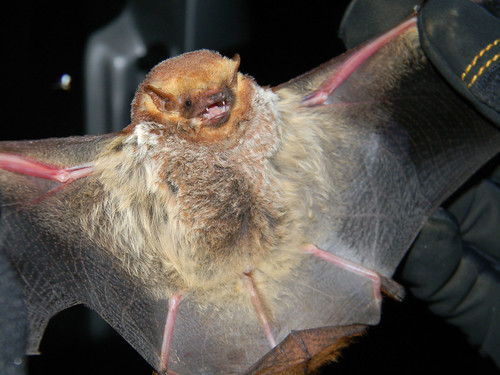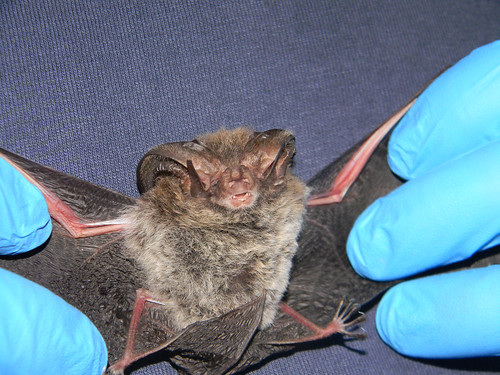Well into the wee hours of night, for five successive evenings, teams of scientists from across the southeastern United States waited and watched as bats in the Apalachicola National Forest swooped down to feed on their insect prey only to be captured in sheer mist nets.
The scientific teams and U.S. Forest Service wildlife biologists were conducting bat surveys to test for white-nose syndrome and general bat healthiness throughout the region.

Dubbed “Bat Blitz,” the 5-day event was hosted by the Florida Bat Working Group, which partnered with the U.S. Forest Service, Florida Fish and Wildlife Conservation Commission and the University of Florida
“We’re mapping locations where each species was captured to learn more about the types of forest and water bodies that each species is associated with here in the Panhandle,” said Assistant Professor Holly Ober of the University of Florida Department of Wildlife Ecology and Conservation. “We'll also study the bat guano to determine which insects each bat species is feeding on.”
Bat testing to date has confirmed a very low probability of local bats being affected by white-nose syndrome, a condition linked to the deaths of more than a million hibernating bats from New Hampshire to Tennessee.
According to the U.S. Fish and Wildlife Service, the cause of the bat deaths remains unknown despite the continuing search to find the source of this condition by numerous laboratories and state and federal biologists.
Each night, 12 teams of five biologists spread out across the forest and surveyed bats in places where they were expected to be feeding.
“Because bats are active at night, few people see them, and even fewer understand or appreciate their importance in our daily lives,” said Micah Thorning, wildlife biologist for the U.S. Forest Service. “For example, as the primary consumers of flying insects, bats play a crucial role in insect control.”
The survey netted 246 bats of eight different species with the number of bats caught at one site totaling 57. The most widespread species caught were the Seminole Bat, Evening Bat, Red Bat and Southeastern Bat, but rarer species such as the Tricolored Bat, Big Brown Bat, Rafinesque's Big-eared Bat, and Brazilian Free-tailed Bat were also captured and tested.
The event started in 1998 with the Southeastern Bat Diversity Network (SBDN) selecting Tennessee to host the first Bat Blitz. SBDN promotes, facilitates and organizes the event every year.

“Planning a Bat Blitz takes a lot of time and effort -- most states begin planning one and a half to two years in advance,” said Ober. “We began a bit late, so we have been working feverishly for the past eight months.”
Ober credited their success to the dedication of a core group of individuals from the Florida Bat Working Group, an organization of local, state and federal agencies and private partners.
Visit this link for more bat facts and information.
The Forest Service also partners with BatsLIVE! A Distance Learning Adventure, a free education program aimed to bring the best of bat information and research to help children understand the value of bats and the conservation challenges they face.

